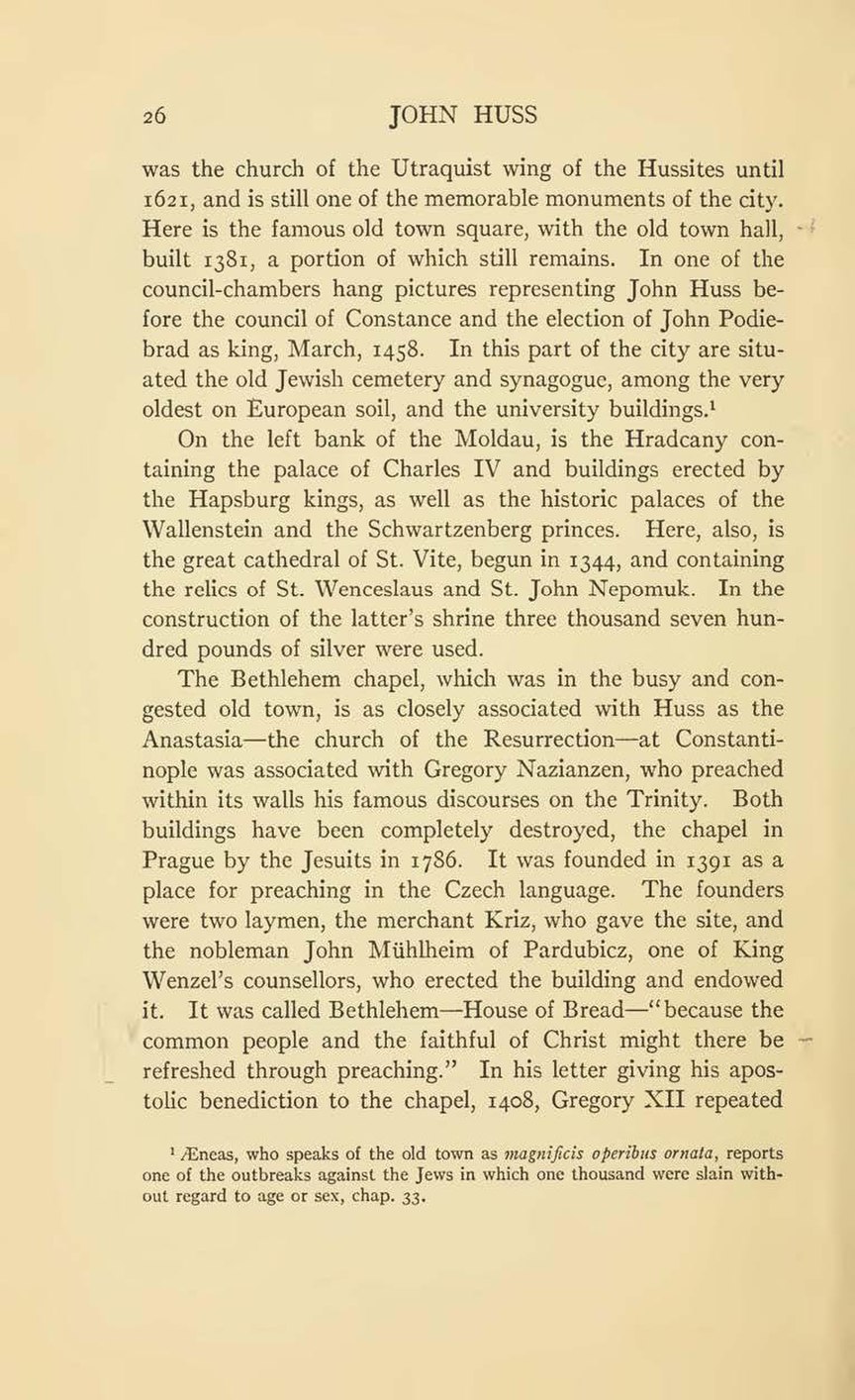was the church of the Utraquist wing of the Hussites until 1621, and is still one of the memorable monuments of the city. Here is the famous old town square, with the old town hall, built 1381, a portion of which still remains. In one of the council-chambers hang pictures representing John Huss before the council of Constance and the election of John Podiebrad as king, March, 1458. In this part of the city are situated the old Jewish cemetery and synagogue, among the very oldest on European soil, and the university buildings.[1]
On the left bank of the Moldau, is the Hradcany containing the palace of Charles IV and buildings erected by the Hapsburg kings, as well as the historic palaces of the Wallenstein and the Schwartzenberg princes. Here, also, is the great cathedral of St. Vite, begun in 1344, and containing the relics of St. Wenceslaus and St. John Nepomuk. In the construction of the latter’s shrine three thousand seven hundred pounds of silver were used.
The Bethlehem chapel, which was in the busy and congested old town, is as closely associated with Huss as the Anastasia—the church of the Resurrection—at Constantinople was associated with Gregory Nazianzen, who preached within its walls his famous discourses on the Trinity. Both buildings have been completely destroyed, the chapel in Prague by the Jesuits in 1786. It was founded in 1391 as a place for preaching in the Czech language. The founders were two laymen, the merchant Kriz, who gave the site, and the nobleman John Mühlheim of Pardubicz, one of King Wenzel’s counsellors, who erected the building and endowed it. It was called Bethlehem—House of Bread—“because the common people and the faithful of Christ might there be refreshed through preaching.” In his letter giving his apostolic benediction to the chapel, 1408, Gregory XII repeated
- ↑ Æneas, who speaks of the old town as magnificis operibus ornata, reports one of the outbreaks against the Jews in which one thousand were slain without regard to age or sex, chap. 33.
